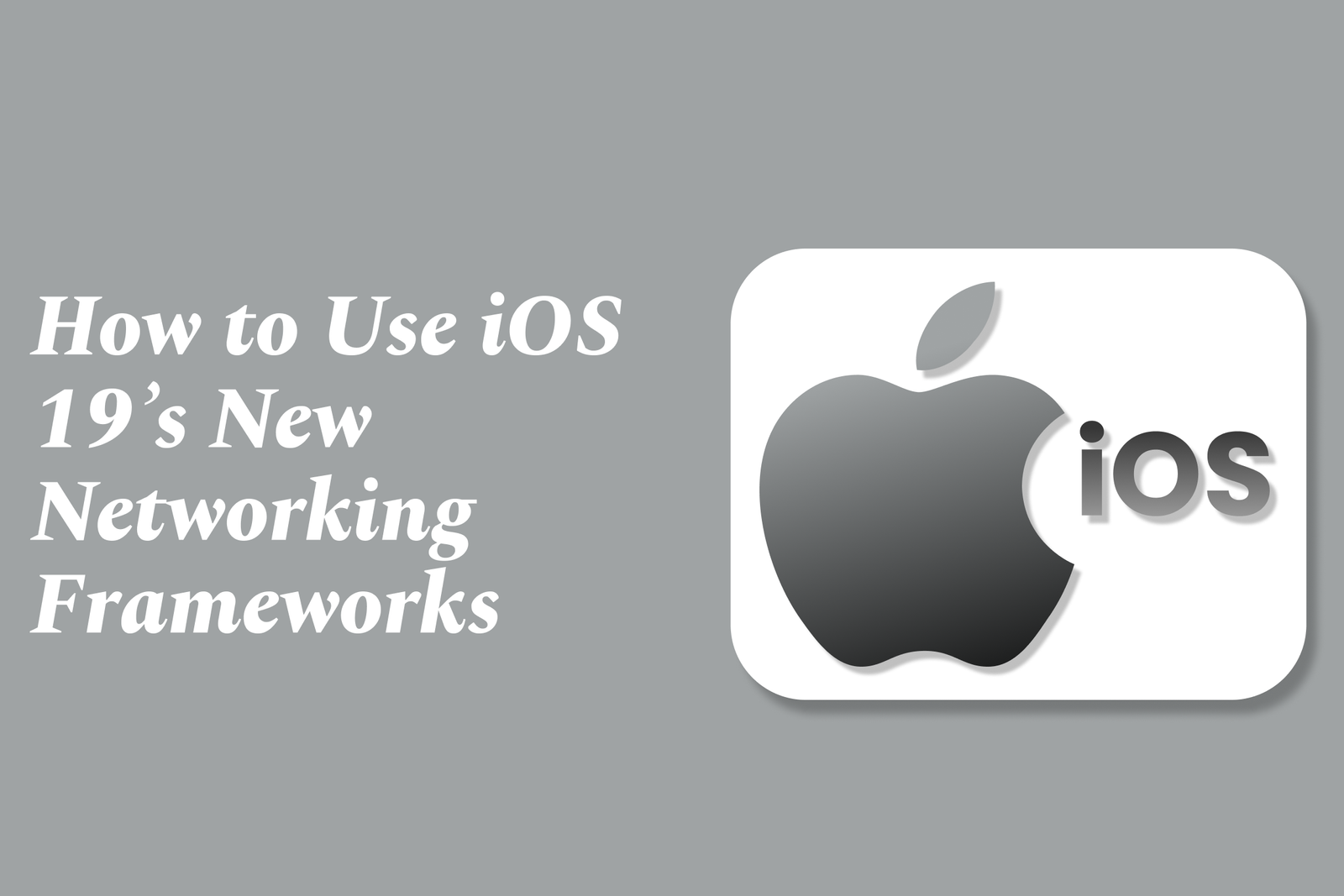How To Use IOS 19?S New Networking Frameworks
iOS 19 introduces enhanced Networking Frameworks that simplify building secure, efficient TCP/UDP connections for client-server apps. These APIs provide better control, streamlined connection handling, and improved performance, making network communication easier and more reliable.
How to Use iOS 19’s New Networking Frameworks
1 ) Introduction to Apple's Network Framework in iOS 19
Apple has introduced new networking APIs and frameworks with iOS 19, providing convenient abstractions for lower layers of the networking stack.
The Network Framework simplifies network communication and offers powerful features beyond what traditional APIs like URLSession provide.
2 ) Key Features of the Network Framework
The framework supports modern networking protocols with better security and performance.
Enables handling of connections, listeners, and network parameters in a streamlined fashion.
Provides first class support for both TCP and UDP protocols.
Facilitates easier implementation of server and client networking functionalities.
3 ) Using the Network Framework to Build Client Server Applications
Developers can set up NWConnection for client side network communications.
NWListener can be used to accept incoming network connections for server apps.
The framework allows monitoring and managing connection state changes effectively.
Provides callbacks and delegate methods for handling network events.
4 ) Advantages over Previous Networking APIs
Improved ease of use and better abstraction of complex networking tasks.
Enhanced compatibility with modern network protocols and security standards.
Greater control over network parameters without sacrificing code simplicity.
Suitable for real time communication apps, streaming, and custom protocols.
5 ) Sample Implementation Highlights
Establishing a connection using `NWConnection` requires specifying the endpoint and parameters.
Listening for incoming connections with `NWListener` includes defining the port and waiting for new connections asynchronously.
Sending and receiving data uses simple handler closures that process incoming and outgoing buffers.
The framework supports cancellation and error handling cleanly.
6 ) Development Tips for iOS 19 Networking
Use the new framework alongside or in place of URLSession for advanced networking needs.
Ensure proper error handling and state monitoring to maintain robust network communication.
Test connections under various network conditions to leverage the framework’s resilience features.
Consult the WWDC 2018 session “Introducing Network.framework” for thorough understanding and examples.
7 ) Addressing Common Issues
The transition from older APIs may require code refactoring.
Attention is needed for CORS and secure connections when developing client server apps.
Developers should be aware of potential changes in networking behavior across iOS versions.
This summary provides an overview of the new networking frameworks introduced in iOS 19, their key features, usage guidance, and practical considerations to help developers leverage the capabilities efficiently.
https://justacademy.in/news-detail/what?s-new-in-swift-playgrounds-5.5
https://justacademy.in/news-detail/swiftui-and-uikit-integration-techniques-for-ios-19
https://justacademy.in/news-detail/flutter-vs-unity-for-game-dev-2025
https://justacademy.in/news-detail/how-react-native-is-evolving-with-the-latest-tech
https://justacademy.in/news-detail/react-native-and-firebase:-the-perfect-pairing-in-2025
Related Posts
Java supports GDPR and data privacy by enabling secure data handling through encryption, controlled access, and precise data management. It allows developers to minimize PII exposure, ensure data confidentiality, and design workflows that comply with data protection regulations effectively.
Java code quality tools have evolved to include advanced static analysis, integrated security checks, and AI-powered code reviews. These updates help developers detect bugs, enforce coding standards, and enhance security, streamlining the development process and improving overall code reliability.
Java remains a cornerstone in big tech companies, evolving with modern features like records, pattern matching, and virtual threads. Its robust ecosystem, enhanced performance, and growing AI integrations keep it vital for both legacy systems and innovative new projects.
Java and CI/CD pipeline optimizations streamline Java application development by automating builds, tests, and deployments. They improve efficiency through parallelization, caching, and secure secrets management, enabling faster feedback loops and more reliable, scalable software delivery.
Java supports modern cryptography standards through its flexible Java Cryptography Architecture (JCA), enabling integration of advanced algorithms like AES, EdDSA, and post-quantum tools. Libraries like Bouncy Castle offer FIPS-certified, hardware-accelerated implementations for secure development.
Java 23 enhances record patterns by enabling concise, direct destructuring of record components within pattern matching, simplifying type checks and data extraction. This improvement boosts code readability and expressiveness by reducing boilerplate in handling immutable data classes.
Java remains a top choice for mobile app backends, powering scalable, secure, and high-performance server-side solutions. Latest trends include cloud-native microservices, reactive programming, and enhanced JVM optimizations, enabling efficient, flexible, and robust mobile backend development.
Java SE 24 and LTS Java SE 21 offer enhanced features and performance, while Apache Spark 4.0.0 introduces Scala 2.13 support and advanced ML and SQL capabilities. Together, they empower developers to build scalable, high-performance data applications with modern tools.
JUnit 5 modernizes Java testing with a modular architecture, improved assertions, and seamless Java 8+ support. Beyond JUnit, tools like Mockito and AssertJ enhance mocking and assertions, creating a powerful, flexible ecosystem for writing clean, efficient Java unit tests.
Java plays a pivotal role in cloud automation tools by providing a robust, platform-independent language used to build scalable automation frameworks like Jenkins and Selenium, enabling efficient CI/CD pipelines, testing, and orchestration across diverse cloud environments.










